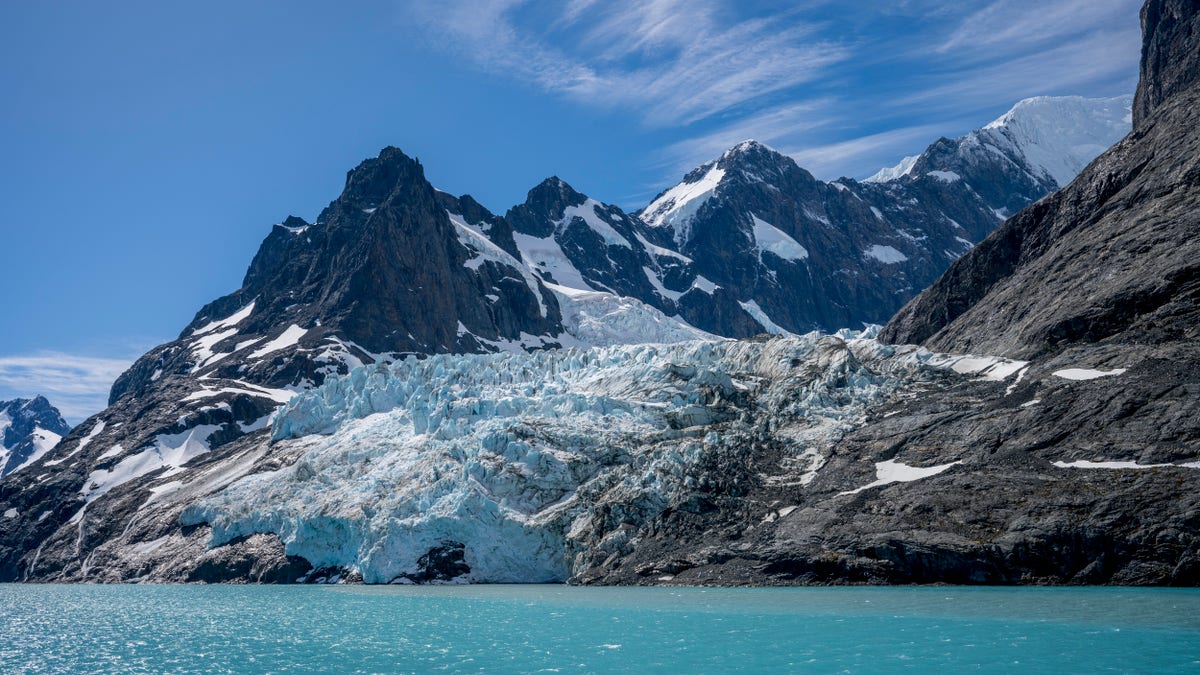Northern Lights cast a green glow above Alaska’s Glacier Bay National Park
Alaska’s Glacier Bay National Park is lit with a stunning green glow as the Northern Lights put on a beautiful display in the early morning hours.
The world’s largest iceberg has moved for the first time in 30 years after finally freeing itself from the ocean floor near Antarctica — and it could end up causing problems for wildlife.
Iceberg A23a "calved," or fell off the greater glacier on the continent, from the western side of the Ronne Ice Shelf and floated in the Weddell Sea before it ended up caught on the ocean floor in 1986. The piece of ice, at a size of 1,500 square miles and weighing nearly a trillion metric tons, is about three times the size of New York City.
The size makes it the world’s largest iceberg in the world, only briefly losing the title to iceberg A76 before that iceberg split into three fragments.
The iceberg’s trajectory will see it leave Antarctic shallows and enter the greater Southern Ocean, moving along a path known as "iceberg alley" where other chunks remain.
HOW RARE EARTH ELEMENTS FACTOR INTO THE CLEAN ENERGY TRANSITION
Famous explorer Sir Ernest Shackleton followed this same path when he made his escape from the area in 1916 after losing his ship to an ice crush, according to the BBC.

A satellite image of the world's largest iceberg, named A23a, is seen in Antarctica on Nov. 15. (European Union/Copernicus Sentinel-3/Handout via Reuters)
Glaciologists and climatologists have tracked the iceberg’s movement with satellite imagery, allowing them to closely mark its trajectory. They have discerned the iceberg is accelerating as it travels out from the shore.
WE NEED TO PROTECT THESE WHALES: JOURNALIST MICHAEL SHELLENBERGER
British Antarctic Survey glaciologist Oliver Marsh told Reuters that the iceberg could have finally dislodged from its spot on the ocean floor after thinning for the past few decades, giving it a "little bit of extra buoyancy" that has also allowed it to pick up speed faster than scientists would have anticipated.

Glaciers and mountains of Drygalski Fjord on South Georgia Island, sub-Antarctica are seen. (Wolfgang Kaehler/LightRocket via Getty Images)
The iceberg could snag again once it reaches South Georgia Island, which could prove problematic for the local wildlife as the chunk of ice could block off much-needed access to necessary food.
NEW JERSEY TO CONTINUE OFFSHORE WIND PUSH DESPITE TOP CONTRACTOR'S WITHDRAWAL
South Georgia is home to myriad animal life, including seals, penguins and other seabirds that breed on the island. The lack of food access could endanger a swath of newborn animal populations.

Melting icebergs are seen as scientists conduct fieldwork on Horseshoe Island in Antarctica within the 7th National Antarctic Science Expedition under the coordination of the Scientific and Technological Research Council of Turkiye MAM Polar Research Institute with the joint responsibilities of the Turkish Presidency and Turkish Ministry of Industry and Technology on Feb. 26. (Sebnem Coskun/Anadolu Agency via Getty Images)
If the iceberg doesn’t cause problems for South Georgia, it could end up heading toward South Africa, where it could cause massive disruptions to shipping lanes.
A23a could end up suffering the same fate as A76 and another massive iceberg, A68, which also broke into smaller chunks as it entered warmer waters.
CLICK HERE TO DOWNLOAD THE FOX WEATHER APP
The melting iceberg could end up releasing the minerals gathered from its time as a glacier that dragged itself across the Antarctic continent, remaining frozen for thousands of years. The minerals provide some nutrients to organisms in the area, though not enough to make up for the potential loss of food access in the short term.
Reuters contributed to this report.

